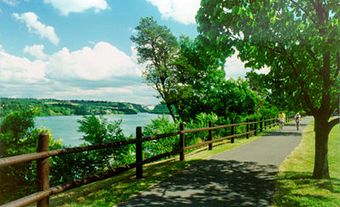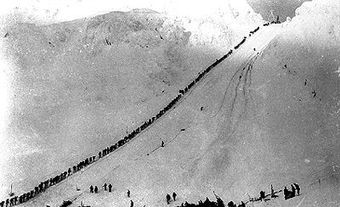Pine Pass, elevation 874 m, crosses the continental divide northwest-southeast in northeastern BC. The Pine River rises southwest of the pass then flows northwest to meet the Peace River, near Fort St John. The most northerly and lowest of the 6 highway passes through the ROCKY MOUNTAINS, it was known by whites as early as 1806, when one of Simon FRASER's men deserted and travelled this way. Joseph Hunter "rediscovered" the pass in 1877 as a possible CPR route. Hart Hwy crosses it, linking Prince George and Dawson Creek.
-
- MLA 8TH EDITION
- Boles, Glen. "Pine Pass". The Canadian Encyclopedia, 24 January 2014, Historica Canada. www.thecanadianencyclopedia.ca/en/article/pine-pass. Accessed 16 April 2024.
- Copy
-
- APA 6TH EDITION
- Boles, G. (2014). Pine Pass. In The Canadian Encyclopedia. Retrieved from https://www.thecanadianencyclopedia.ca/en/article/pine-pass
- Copy
-
- CHICAGO 17TH EDITION
- Boles, Glen. "Pine Pass." The Canadian Encyclopedia. Historica Canada. Article published February 07, 2006; Last Edited January 24, 2014.
- Copy
-
- TURABIAN 8TH EDITION
- The Canadian Encyclopedia, s.v. "Pine Pass," by Glen Boles, Accessed April 16, 2024, https://www.thecanadianencyclopedia.ca/en/article/pine-pass
- Copy
Thank you for your submission
Our team will be reviewing your submission
and get back to you with any further questions.
Thanks for contributing to The Canadian Encyclopedia.
CloseArticle
Pine Pass
Article by Glen Boles
Published Online February 7, 2006
Last Edited January 24, 2014
Pine Pass, elevation 874 m, crosses the continental divide northwest-southeast in northeastern BC. The Pine River rises southwest of the pass then flows northwest to meet the Peace River, near Fort St John.

 Share on Facebook
Share on Facebook Share on X
Share on X Share by Email
Share by Email Share on Google Classroom
Share on Google Classroom


